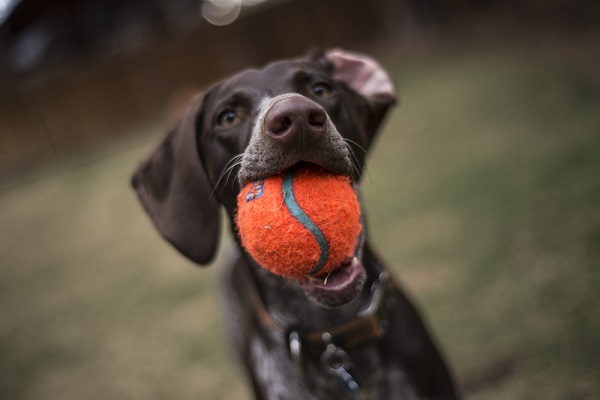Understanding Dog Bite Liability and Coverage Issues

By: Nancy Germond
Approximately 4.5 million dog bites occur in the U.S. each year, according to the Centers for Disease Control and Prevention (CDC). From 2005 to 2017, 433 Americans died from dog attacks, according to DogsBite.org. Of these fatalities, 65.6% were the result of attacks by pit bulls, with Rottweilers accounting for an additional 10.4%.
Dog bites, whether minor wounds or fatalities, cost the insurance industry $881 million in 2021, according to the Insurance Information Institute (Triple-I).
In 2021, the average cost per dog bite claim was $49,025, Triple-I reported, which is up approximately 39% since 2012. Not only do dogs bite, but they also cause other problems, such as injuries caused by knocking down an elderly person.
Why Dog Type Matters to Insurers
We all know the saying, “There are no bad dogs; only bad owners.” There are many loveable mastiffs, rottweilers and pit bulls; however, the dog breed can make a difference.
While many dog bites do not injure or the wounds are minor, some dogs, such as mastiff derivatives, pit bulls, rottweilers and shepherd breeds, are viewed as problematic by underwriters.
“As for mastiff breeds, it is not just the design of the jaw, there is a genetic design in the mind of the dog that breeders selected,” says Pat Dorsey, a long-time dog trainer and expert witness in Prescott Valley, Arizona. “Given its breeding, the mastiff’s intent was to destroy the prey, either animal or human. People bred these dogs to guard large estates; their intent was to breed the dog to destroy its victim.”
Further, “breeders created the pit bull terrier by taking the mastiff and terrier, bred together to get speed and prey drive for sport—the sport is the killing of other animals,” Dorsey says.
When shelters and rescues place these animals as pets, most people do not recognize their design. “Once the pit bull has decided to bite, there is no stopping it,” Dorsey says. “An attack can continue for as long as 30 minutes, there is no way to determine the dog’s intentions, and you never know what triggers it.”
While “the odds of either an animal or a person surviving intact from a pit bull attack are extremely low, you can’t predict it and you can’t control it,” Dorsey concludes.
While breed restrictions frustrate agents and their clients, they are an underwriting tool that probably will not change.
An Alternative to Breed Restrictions?
However, there is another alternative suggested over the years by some insurance experts: To rely on the American Kennel Club’s (AKC) Canine Good Citizen designation.
“The American Kennel Club’s Canine Good Citizen Program is a two-part program that teaches responsible dog ownership to dog owners and good manners to dogs,” says Mary R. Burch, Canine Good Citizen director, AKC. “The heart of the CGC program is a 10-step test of practical behaviors that demonstrate the dog is safe around other people and dogs.”
To become part of the program, “dog owners begin the Canine Good Citizen Test by signing the CGC Responsible Dog Owner’s pledge,” Burch says. “The pledge says that owners agree to properly confine and control their dogs, using leashes and fences where appropriate. If every dog owner did this, there would be almost no dog bites.”
Requesting this certification from homeowners who expect liability coverage for their pet under the homeowners policy could be a solid risk-reduction tool.
Litigation for Dog Bite Liabilities
The traditional approach to dog liability was the “first-bite-free rule.” If a dog someone for the first time and had no history of previous bites, courts would usually find no liability unless certain other facts apply, such as a dog kept as a guard animal.
Yet, most states employ a strict liability rule, which means the owner is strictly liable no matter what the circumstances. Some states have a modified version of strict liability, where certain circumstances can be evidentiary. For example, in Arizona, the person bitten must not have provoked the dog for the standard to apply.
Without a statute, simple negligence laws can apply. For example, if a repair person leaves a gate open and the dog escapes and causes an injury, their employer’s insurance may also apply in addition to any negligence on the part of the homeowner.
Carriers may also be hesitant to defend these claims, especially when claims involve children, as bites often do, and juries encounter gruesome photos of disfigurement or death. Therefore, it pays for carriers to rely on experienced mediators to move both sides toward settlement.
Damages in dog liability claims can be steep. Damages can include disfigurement; loss of consortium; loss of future earning capacity; lost wages; present and future medical bills; present and future pain and suffering; physical damages; and treatment for post-traumatic stress disorder and its lingering impact on the victim.
Various Coverage Approaches to Animal Liability Coverage
Depending on the circumstances, carriers take the following approaches to dog-bite claims:
Coverage denial: If the policy excludes coverage for dogs that are protection trainedor the policy language limits coverage, the carrier may deny the claim.
Policy sublimits: Some carriers place a sublimit on canine-related losses. Watch for these sublimits when using non-ISO forms. Many forms exclude dogs kept as guard dogs or trained as guarding dogs.
Reservation of rights letters: If the insurer believes an act may be intentional—for example an insured setting a dog on someone—the carrier may defend under a reservation of rights. This can also occur if the state or municipality has begun a criminal action against the dog owner.
Declaratory relief action: The carrier may ask the court to rule on coverage applicability.
Policy rescission: Misrepresentation on the application, such as presenting a dog as a different breed or failing to disclose a bite history, can result in policy rescission. The standards for rescission are high, however.
A canine incident can bite almost any insurance policy, especially with an increase in “bring-your-dog-to-work” employment trends. Any of these policies can experience a dog-related liability claim: business or personal auto; businessowner’s policy; commercial general liability policy; dwelling policy; farm and ranch; homeowners; watercraft policy; and workers compensation.
What Should an Agent Do?
Americans love their dogs. During the COVID-19 work-from-home period, nearly 1 in 5 households adopted a pet of some type, according to the American Society for the Prevention of Cruelty to Animals (ASPCA). As breed restrictions tighten, agents have an important interest in helping to avoid a coverage issue or an expensive dog bite claim.
While we all like to believe our insureds are truthful, if your homeowner discloses a dog, some due diligence on your part can pay dividends. One canine incident can take a bite out of your profitability. Checking the insured’s social media posts is a fast way to evaluate the dog’s breed and pinpoint any concerns. Refer those concerns to the carrier to let them decide, but do not fail to disclose any information that could preclude coverage.
If questions arise, ask your insured for more information, and explain the importance of full disclosure of the dog’s breeding and bite or aggression history, including animal aggression.
On your renewal queries, ask if the family has acquired any pets. If yes, they should answer a few questions, such as the type of pet, the dog breed, and any bite history for that dog.
If you cannot place the insured without a canine liability exclusion, consider standalone dog liability policies available on the market.
Nancy Germond is Big “I” executive director of risk management and education.










